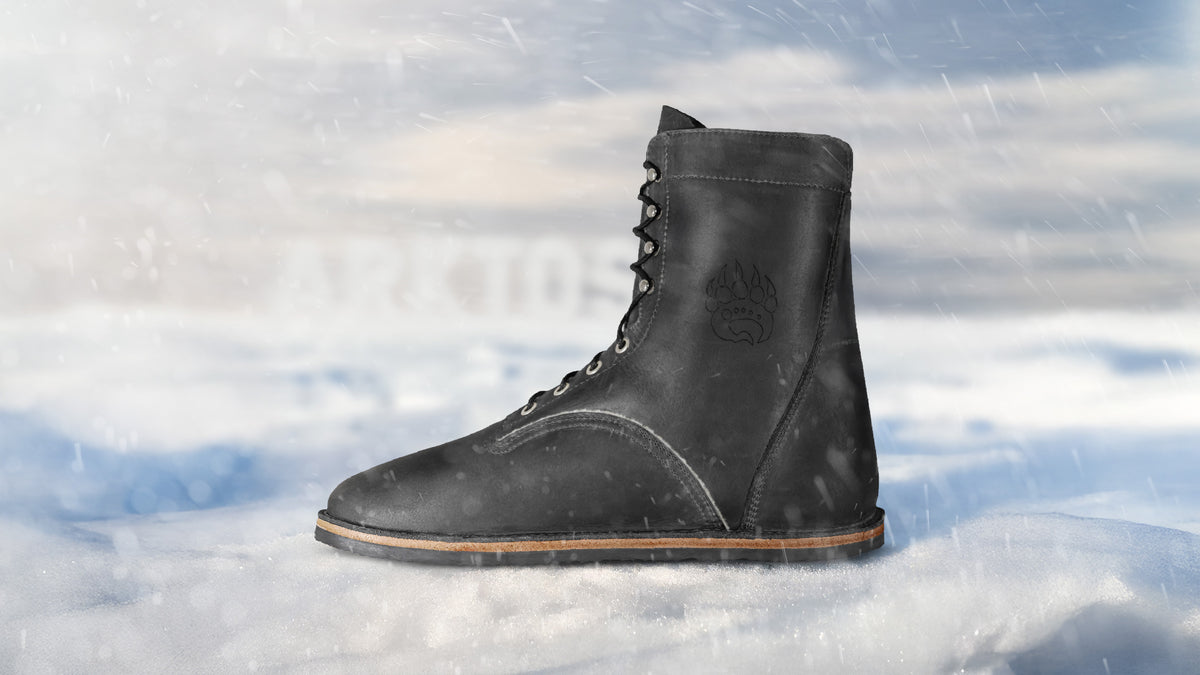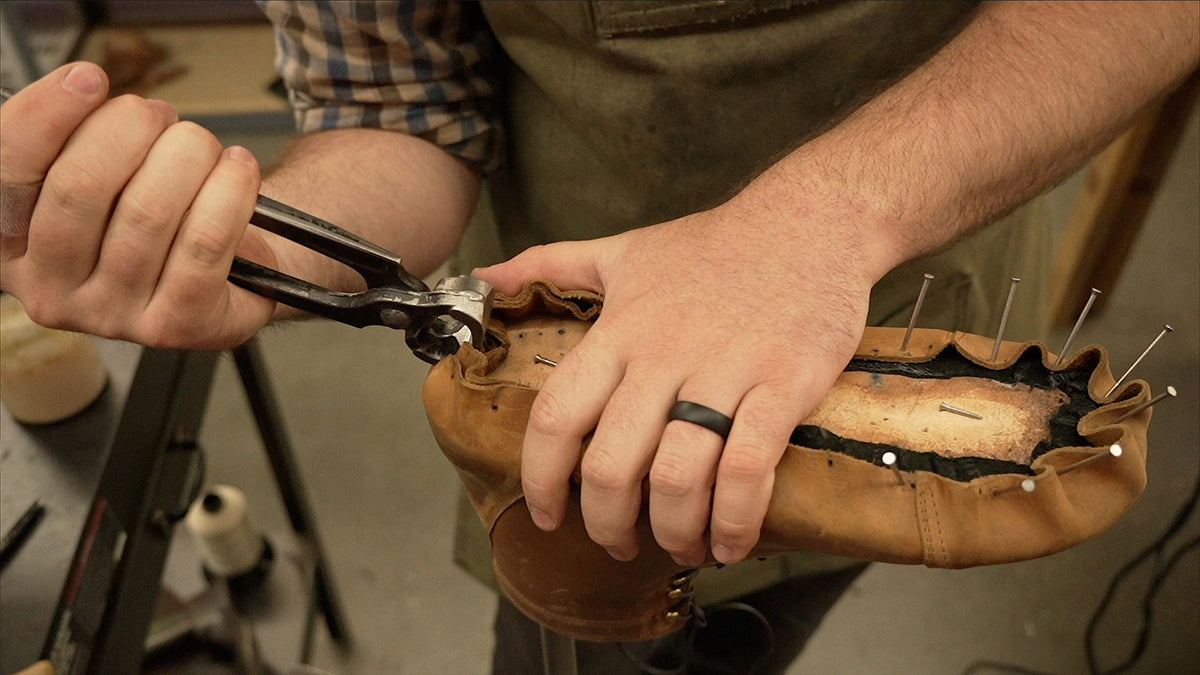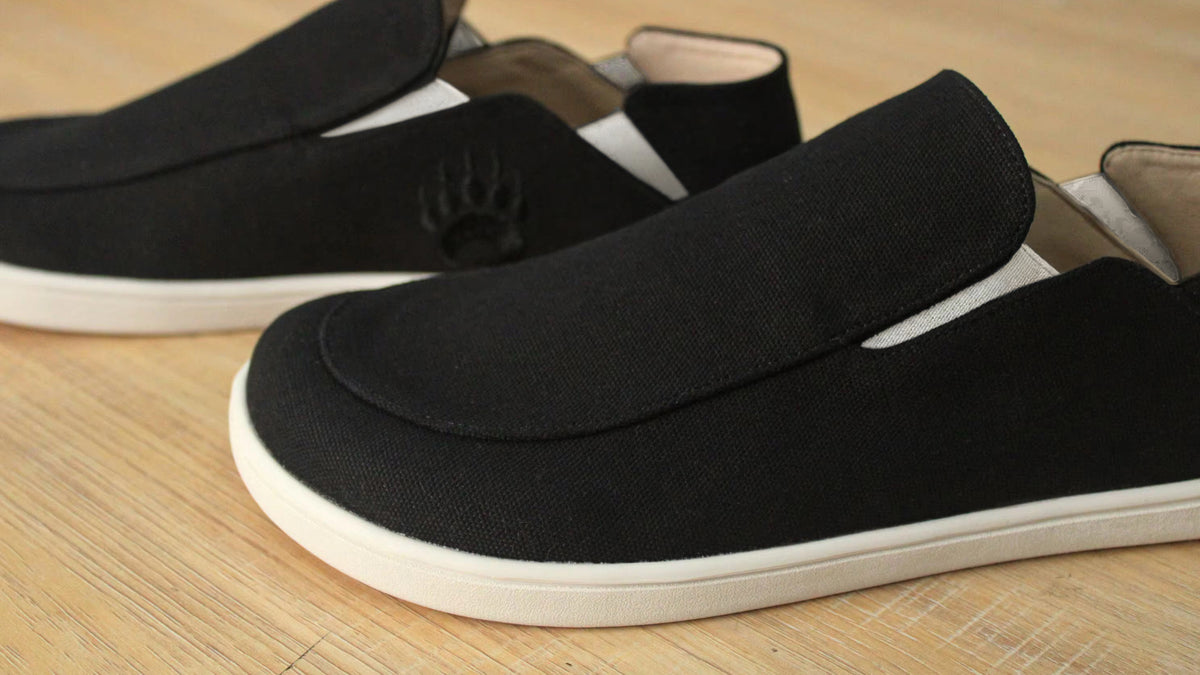Benefits to Running and Sprinting Barefoot or in Minimalist Shoes
By: John Baker and Lily Hoog-Fry
What's the Difference Between Sprinting and Running?
When asking, “are my minimalist shoes (hopefully they're Bearfoot!) good for sprinting?'' It is important to define what sprinting really is, and what separates it from running before looking at some research between traditional running shoes, bare feet, and minimalist/zero drop shoes.
Although we know sprinting as one of the quintessential movements associated with training hard, but what does it mean when someone says something is good for sprinting versus running?
Sprinting and running are similar, and are separated by positioning, goal, time and distance. Sprinting consists of maximal effort, typically (at least comparatively in practical terms) shorter distances than running (yes, some freaks effectively sprint marathons but we’re talking about the average person here).
Sprinting usually consists of repeated maximal effort bouts interspersed with long amounts of rest. Running on the other hand is comparatively longer distances and typically is not interspersed with rest but is rather done in a steady-state format, or with minimal rest between medium and longer distance bouts. Overall, despite the fact that sprinting and running are very similar, there are some key differences -- namely in lower leg and lower limb positioning, foot strike patterns (forefoot vs heel strike), connective tissue loads, ground contact time, and body positioning relative to the ground.
When we look at the positioning of sprinting versus running, we notice that there are a lot of similarities and some important things, and differences to discuss. The primary difference is in the horizontal vs vertical displacement or force vector produced during strides. In simpler words, when you sprint, you are lower to the ground (more of an acute angle to the ground) and have more horizontal force and power production. When sprinting, each step is a shorter stride than in running, and the lower extremity moves in a sort of pumping action. This pumping motion (as opposed to a cyclic motion) allows for the greater impact forces that are necessary to accelerate as fast as possible -- as you are striking back at the ground, the ground is propelling you forward in return, so the more forceful you can strike the ground the more forcefully it will propel you forward. This is why in sprinting you want to be thinking about driving hard into the ground and generating as much horizontal force as possible to accelerate you forward, and is one of the reasons why sprinters tend to look a lot more like bodybuilders than long distance runners -- more strength = more force into the ground = more speed. Are you starting to see how a cushy modern running shoe under the soles of your feet may not be as ideal as a flexible shoe with a thin rubber sole that improves foot strength?
While running, you are still obviously still striking at the ground hard, but you’re far more upright. This results in us needing much more of a cyclic/rotary action with our legs, as opposed to the powerful pumping action observed in sprinting. The aim of this cyclic stride isn’t to lean forward to promote acceleration like in sprinting, but rather to stay upright and try to bounce off the ground, decrease ground contact time, and decrease the friction forces exerted on the body by the ground -- thereby increasing running economy. Remember, you only need to stay low and horizontal when you are accelerating, once you've exceeded the distance in which you can continue to accelerate it's time to think about maximizing your running economy.
When you’re in the flight phase of running you’re moving through space with minimal friction, but each time your foot is on the ground it’s like tapping the brakes.
Each time your foot hits the ground, the amount of friction forces acting on your body goes up exponentially, and your speed is significantly reduced. A good runner knows that small decreases in ground contact time result in big decreases in overall running times -- this is where having a more barefoot shoe can have a huge impact. Some shoe companies seem to think that the that the best way to decrease friction between you and the ground is to shrink the front of the foot and shoe with a narrow toe box, and call it shoe technology. The problem with this is that it completely disrupts the intrinsic muscles of the foot, the small muscles from the lower leg that extend into the foot, and the longitudinal arch of the foot.
What seems to be the best choice is to provide flexible shoes with less cushioning, properly transition to running and sprinting barefoot or in a minimalist shoe (ideally the younger age the better, and always use a proper transitioning and acclimation period – Here’s a blog on How to Transition to Barefoot Shoes: A Research-Based Guide), improve the shock absorption and elastic capabilities of the achilles tendon, plantar fascia, longitudinal arch, and strengthen any muscle weakness that may disrupt natural gait and lead to bad form.
Are Bearfoot Shoes Going to Make Me Slower?
A study in 2014 (Theophilos et al) looked at the effects and potential benefits that three different styles of footwear had on 30m sprint performance – conventional running shoes, traditional track spikes, and barefoot running. This study had 33 participants with an average age of 12 years old that had never trained barefoot (conventional shoe wearers!) and who already consistently trained at least 4-days a week.
Participants did multiple sprints in each type of shoe and barefoot on multiple different days of testing -- which is key because it helps even the playing field and increases the credibility of the results. Participants were also given the same warm-up and testing days had the same environmental and track conditions. This may not seem like that big of a deal at first but imagine running when it’s freezing and raining and without a proper warm-up, and subsequent hot and dry days with a proper warm-up. If this hypothetical situation were the case, it would be a lot harder to think the shoes had anything to do with the results.
After testing, the results of this study showed that the shoes didn’t affect the sprinter’s speed! There were no statistically significant or clinically/practically significant differences between sprint times and footwear (Avg: Conventional Footwear = 5.30sec, Spikes = 5.28sec, Barefoot = 5.29sec). This shows us that, despite having no prior experience with running barefoot, switching to barefoot sprinting had no noteworthy performance deterioration. This study supported that idea that buying some Bearfoot shoes for sprinting is at the very least unlikely to make you slower. Can you say hello to a whole lot more barefoot activity in your future?!
Stronger & Faster:
So, we just learned that switching to barefoot running won’t have any serious effects on your immediate sprinting performance, and you’re clear to starting sprinting in your Bearfoot shoes, but what happens when we look at the the effects of switching to barefoot on spiriting performance over a couple months? Well, Bearfoot enthusiasts, thankfully Hollander and his colleagues (2019) did look at this, and here is what they found.
Hollander and his fellow researchers looked specifically at how transitioning to barefoot running from conventional footwear running would affect biomechanics. In their study, they randomly separated 60 participants (all of which had no prior exposure to barefoot running) into either the conventional footwear or barefoot groups. The study lasted 8-weeks and consisted of weekly 15-minute running sessions at 70% VO2max on a treadmill (fancy talk for it was moderately hard). Additionally, for reference, a treadmill is kind of a hybrid to both running on a hard surface and a soft surface, and can be viewed as kind of a catch all for different running surfaces.
The results showed that the barefoot group had greater peak force, lower ground contact times, improved power, improved flight times, improved running mechanics and improved amortization phase (essentially, they were able to make contact with the ground and string back off faster). The combined effects of all this leads to faster running as well as being literally more efficient with their energy expenditure. This increased efficiency is due to biomechanical differences created from improved elastic recoil of the muscles and tendons of the lower leg and foot, and helps mediate some of the risk factors and common overuse injuries that are seen in running (e.g. stress fractures).
This study shows us that not only will our barefoot shoes not make us slower, they actually may save us energy and make us faster at the same time while lowering our injury risk. These results were then further supported in 2022 by Jaén-Carillo and colleagues, who also found that transitioning to barefoot running from traditional running shoes also showed improved running power, efficiency and economy.
Bearfoot Gainz for Kids:
In 2021 an interesting study was published by Mizushima and his colleagues. They pulled 194 children, aged 10-12, across two different schools in the same city of Japan. All participants, at each primary school, had taken part in a daily activity consisting of running on a hard dirt track for 10 minutes (self-paced). The only difference between the kids from one school and the kids at the other, was that the one primary school (101 children) were barefoot while running, while the other primary school (93 children) wore shoes.
The researchers had these kids perform sprints, perform counter movement jumps (a jump in which the individual can squat down immediately prior to jumping in order to try and produce more elastic energy and jump higher), and 5-Rebound Jump tests (5 jumps where they jumped as high as they could while trying to minimize the ground contact time between each jump) – for all jumps, participants had their hands on their hips.
They observed that the barefoot children had a more forefoot strike pattern (which is more efficient than a heel strike pattern), longer stride length (if you take the same number of strides, but each stride is longer, you move faster), decreased ground contact time (decreased friction forces between you and the ground), greater flight times and faster overall sprint times than the habitually shod children.
The researchers also took the barefoot children and had them perform the same tests with shoes on and noticed a significant increase in ground contact time and a decrease in sprint time (decreased performance).
The findings of this study allude that the habitual barefoot training likely resulted in positive adaptations and improvements in the children’s lower body performance and stretch shortening cycles of the children’s tendons. Meaning that they had greater energy efficiency and ability to receive force from and transmit force to the ground. Basically, these kids had more pop or bounce in their stride.
Looking at the jumping, they observed significantly better scores in the rebound jump test with the barefoot group compared to the group with shoes -- barefoot kids won again. However, they did not see a significant difference in jump height in the counter movement jump. This makes sense because the improvements in the barefoot children’s stretch shortening cycles would be better seen in the rebound jump test than the countermovement jump test.
All in all, you can see that we move better without our shoes, and that getting your kids playing barefoot, and rocking Bearfoot shoes for all the other moments, may have some really cool and positive changes for their running and jumping ability, and their ability to move about and interact with our world.
Conclusion:
With a proper transitioning period, you’re all set to start sprinting and running in your Bearfoot shoes. You’re also all set to buy some for your kiddos and start running and sprinting with them as well!




























